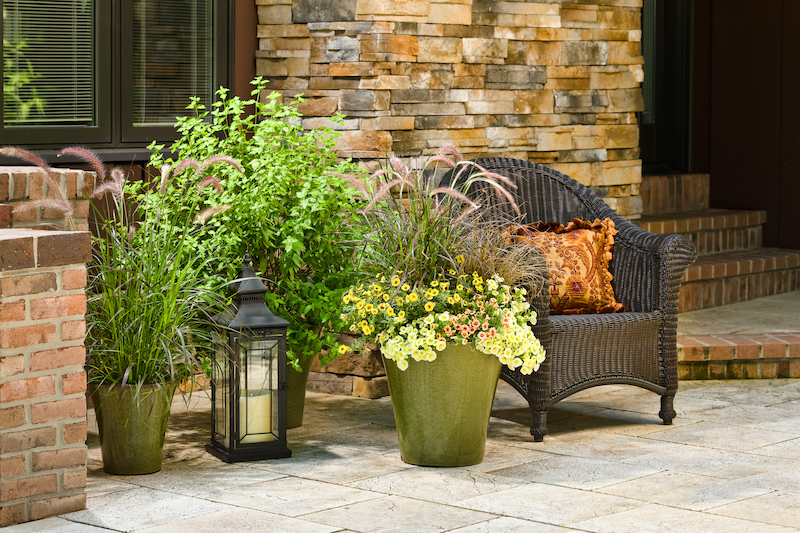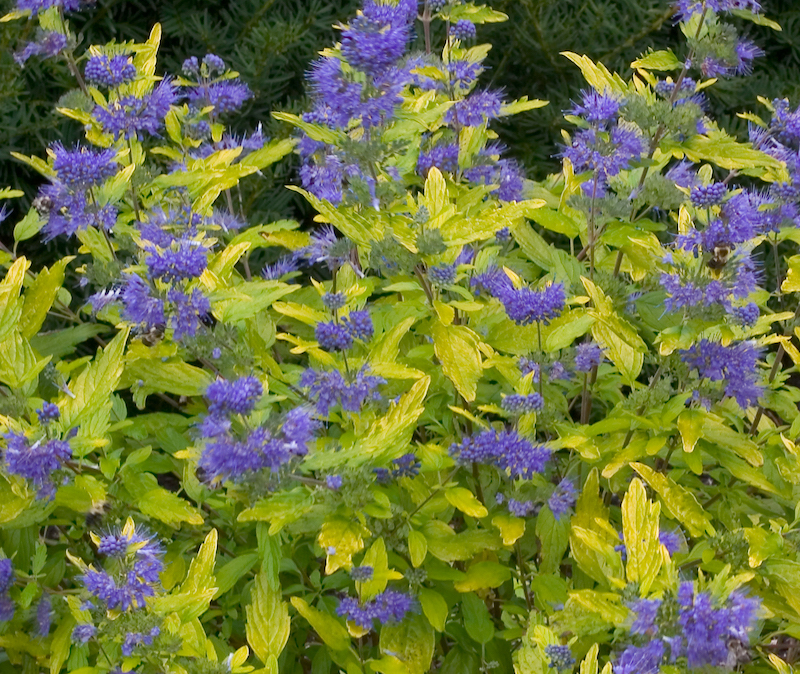Growing Bluebeard in pots lets you place this perennial shrub on a deck or balcony so that you can enjoy the willow-like foliage and lovely flower clusters up close. Bluebeard is easy to grow, so this shrub is a good choice for a container. Potted Bluebeard needs full sunlight and rich soil. Plan to water and fertilize potted Bluebeard plants more often than plants in the ground.

Planting Bluebeard in Pots
Bluebeard can be planted in a pot at any time, although spring is generally the best time. Select a container that has a drainage hole. Any material is suitable for the container, but keep in mind that porous materials like terracotta or unsealed ceramic will allow the soil to dry out more quickly. Porous materials reduce the risk of overwatering, but they also increase the frequency of watering needed. Place the pot in an area that receives at least 6 hours of sunlight.
Best Soil For Bluebeard in Pots
Use a rich potting mix for Bluebeard. You can amend the soil with organic compost when planting. The soil should have a neutral pH and medium moisture but still allow for drainage. There is no need to add rocks to the bottom of the container as this can actually impede drainage.
Caring For Bluebeard in Planters
Bluebeard's woody upright growth habit makes this plant good to feature in planters that frame a door or a walkway. This plant is not ideal for hanging baskets. Place the container in a spot that receives full sun and water when the top couple inches of soil dry out. Bluebeard needs rich soil with a neutral pH.

Watering Bluebeard in Pots
Water potted Bluebeard when the top couple of inches of soil are dry. Drench the soil until excess water drains through the container. Bluebeard is drought tolerant and can handle dry conditions, but water it during a dry spell to keep it looking its best.
Fertilizing Bluebeard in Pots
Bluebeard is not a heavy feeder, but potted plants do best with routine feeding. Use a balanced, water-soluble fertilizer. Apply the fertilizer every few weeks starting in the spring. Continue to feed container-grown Bluebeard through the end of summer. You can stop fertilizing near the end of the growing season.
Winter Care For Bluebeard in Pots
Move potted Bluebeard to a safe area during the winter. Bluebeard is a deciduous perennial, with most cultivars hardy in USDA zones 5 through 9. Plants in the ground can handle winter weather, but container-grown plants do best when moved to an area out of the elements. The space doesn’t need to be heated, but a shed, garage, or basement will provide enough protection from the cold.
Growing Bluebeard Indoors
Bluebeard shrubs do not make the best indoor plants. This is a deciduous shrub, so all flowers and foliage fall away at the end of the growing season. The plant is dormant during the winter, and the bare branches, also known as canes, are not visually appealing.
 |
Author Alison Cotsonas - Published 09-01-2022 |
